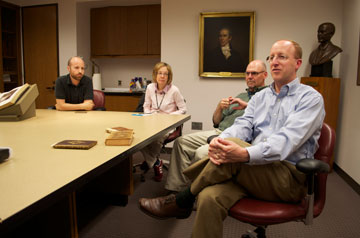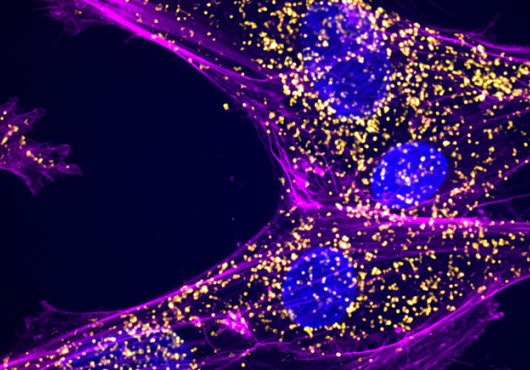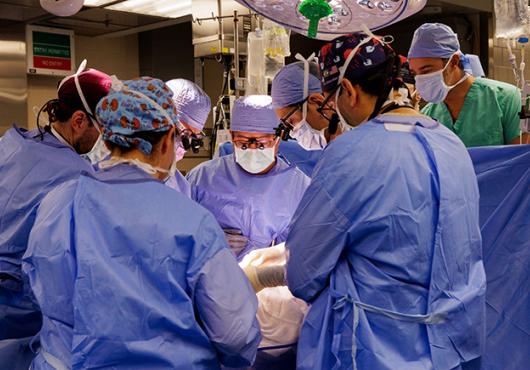Imagine being able to read a 500-year old Italian Renaissance medical text without damaging its delicate pages or spoiling its burnished leather binding. Or picture perusing some of the fragile volumes that survived the Harvard fire of 1764 without fear of destroying the precious tomes.

Historically, bibliophiles would have had to travel to the Center for the History of Medicine at The Countway Library to take advantage of such treasures, but now, making the trek to the Boston area is no longer necessary to see many of these volumes. The ongoing creation of the Medical Heritage Library (MHL), a massive digital collection of valuable medical texts, is making thousands of rare historical medical documents available online, all free-of-charge.
“It’s been an amazing project,” said Scott Podolsky, co-chair of Countway’s Scholarly Advisory Committee for the project and director of the Center for the History of Medicine. “The books at the Countway provide an important window upon hundreds of years of medical evolution, as well as upon contemporary medicine and society.”
The creation of the MHL is a collaborative effort among several university libraries around the country, including those at Yale, Columbia, Johns Hopkins and others, as well as the National Library of Medicine. The Countway staff and teams from the other libraries have been working for several years to accomplish the huge undertaking: digitizing tens of thousands of medical texts from as far back as the early 1500s up to 1923 (the current copyright limit for publications that are in the public domain).
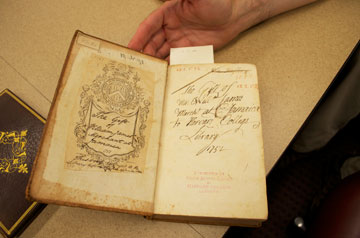
The first phase of the project, which ended in June, was funded by a $1.5 million grant from the Alfred P. Sloan Foundation, with $400,000 of that going to Countway for its portion of the work, which involved digitizing 8,500 HMS medical books. A total of 40,000 items were added to the MHL by the time the work was completed. The second phase of digitization, funded by the National Endowment for the Humanities, will include scanning rare medical journals. An additional 10,000 items have now been digitized since the start of the second phase.
Since the beginning of the project in 2010, the MHL content has been surging in popularity. In May alone, Countway’s contributions in the MHL saw an upsurge in online traffic – about 45,000 downloads across more than 7,000 titles. All of the books are full-text searchable individually, similar to the Google Books project, which makes the collection more attractive to curious audiences.
“It’s far more heavily used than we originally anticipated,” said Podolsky, who is also an HMS associate professor of global health and social medicine.
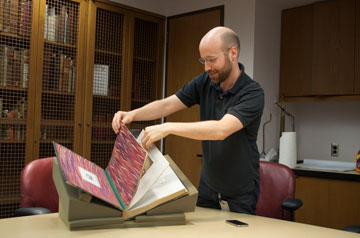
That’s especially significant because “the bulk of the collection has been up for less than a year,” according to Jason Moschella, a project librarian at Countway who is working on the MHL.
Not surprisingly, the hardest part of the undertaking has been logistics.
“Keeping track of all the books, shipping them to get scanned and ensuring that the books selected are in suitable condition to be digitized takes a lot of work,” said Moschella.
The books are first transported to the Boston Public Library, where specialists at the Digital Imaging Lab handle the actual scanning process.
“Each shipment consists of between 500 and 700 books, and scanning that many books takes about five weeks time,” said Joan Thomas, the Countway rare books cataloger on the project.
Thomas, fluent in several Romance languages also has familiarity with Latin, Greek, and German. She has been instrumental in determining which historic books will be digitized first.
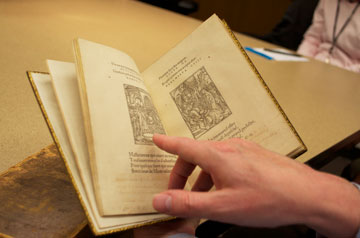
Despite the challenges, working with such a massive and rare collection has its perks. The riches that have been hiding in plain sight on Countway’s stacks have awed even the veteran librarians working on the project.
“Even though we are here around these books all the time, you can’t look at every single book when you work here,” said Jack Eckert, public services librarian on the project. “So this was an unusual opportunity.”
“We can now take a much closer look at the collection than time and money would have otherwise allowed,” said Moschella. “We also find interesting things we didn’t necessarily know we had.”
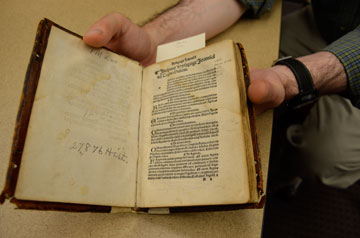
One such finding was a priceless volume published in 1502 in Venice. The Articella, is a collection of medical texts that was used in Renaissance Italy to train physicians. The book is preserved in near-perfect condition, with the exception of the chestnut-colored binding, which is pockmarked with tiny wormholes. The paper, made from cloth and not wood pulp, is yellow with age but still stiff.
While keeping track of medical history is an important part of the project, according to Moschella, the volumes provide a wealth of information on a wide range of topics, from religion to art and philosophy.
“There’s so much more than medicine here. You can learn about society in general,” Moschella said.
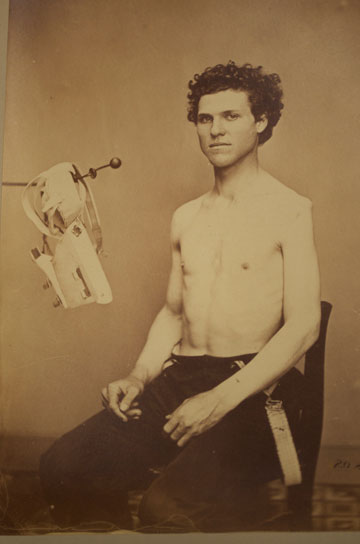
One case in point: a collection of Civil War-era images from the Army Medical Museum that was digitized as part of the project. Titled Photographs of Surgical Cases and Specimens, the catalogue is composed of graphic images of injuries suffered by soldiers, their mournful faces telling a broader tale of the costs of battle.
The collection offers a window into the state of medicine during and after the Civil War, and provides a useful resource to track the history and advancement of medical techniques in the past 150 years. It points to then new methods, such as prosthetics, and is useful to both physicians and historians alike as a tool by which to better understand the history of American medicine and Reconstruction Era America.
The digitization of so many historical documents by no means diminishes the role of Countway’s Center for the History of Medicine. It will still be made available to those who want to come in to touch and see the priceless volumes. In fact, Moschella said, the vast majority of the collections are not online, and Countway has one of the largest collections of medical incunables (pre-1500 books) in the world.
“Knowing what we have is different than seeing and touching it,” said Eckert.
For Eckert, Moschella, Podolsky, Thomas and Kathryn Baker, Deputy Director of the Center for the History of Medicine, however, the multi-million dollar digitization project is all about providing accessibility and opening a door to the past that few other venues can provide.
“We’ve cracked open the library, essentially, and made it accessible,” said Eckert. “And it’s free.”
“You can browse the state of literature from 400 years ago and come to your own conclusions,” said Moschella.
